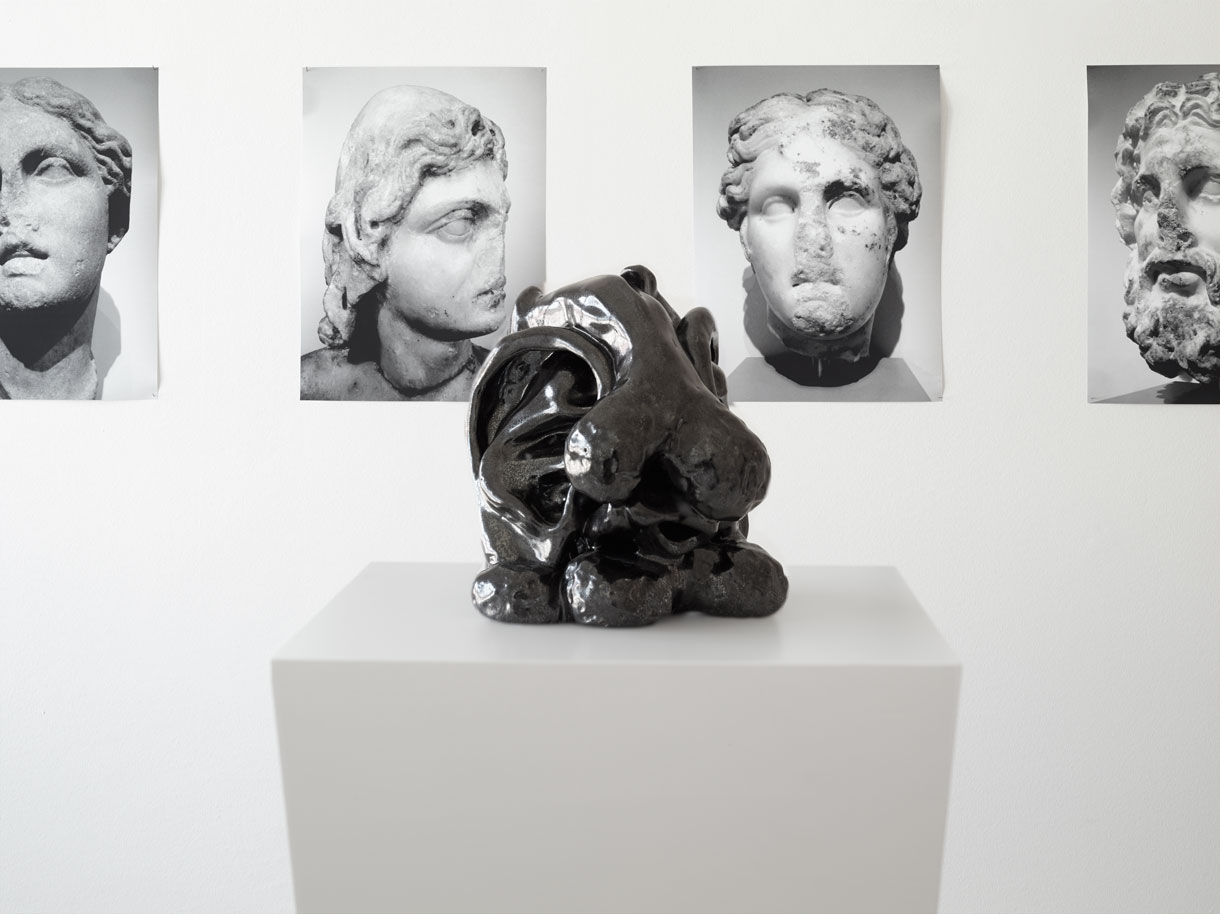At first glance Nic Guagnini’s first solo show seems too smart, almost decorative. Here, seven black-and-white prints hang in a precise line on the wall: on these Heads (2013) antique busts are depicted, each with a severed nose. The Argentine-born, New York-based postconceptualist photographed these in New York’s Metropolitan Museum of Art. They are Greek and Roman heads. In front of this series of images are two square pedestals, a glossy black ceramic sculpture on top of each one. Hard of Hearing (2012) and Blake’s Paranoia (2013) depict black, amorphous forms, which upon closer inspection manifest themselves as cast penises, ears and noses that have been joined together.
The ceramic material blatantly evokes, with an ironic wink, the feeling of kitsch and romanticising historicism. The objectivity of the sculptures proves to be ambivalent; they refer, on the one hand, to a mimetic aesthetic nowadays considered obsolete, while on the other hand the displayed motifs are somewhat unsettling. Now, at latest, a slight uneasiness comes over the viewer as he slowly recognises the network of references that Guagnini has staged in the gallery space. The severed noses, like the ears and penises, remind one of violence against people, the phallic aspects even evoking something like fear of castration. At the same time, although less obviously, the installation alludes to the problematic relationship between the German government working in Berlin and a heavily indebted Greece. The cubic pedestals not only aestheticise brutal events but also cite a modernistic vocabulary of form and thereby bridge the gap between ancient and present times.
In addition, the brochure ‘Some Notes on Dickface’ (2013), which Guagnini designed together with Bill Hayden and which can be downloaded for free from the gallery’s website, as well as the website dickface.me, from which the trashy, virtually ‘bleeding’ Dickface font (also designed by Guagnini and Hayden) of the brochure can be downloaded for one dollar, are integral components of the exhibition. In ‘Some Notes on Dickface’, short texts on subjects like the Holocaust, fear of castration, fetishes and hell are printed; the fragments are illustrated with photos that are in some cases dire – of mass graves, for example – but also with attractive fashion photos. Blatantly recounted on these pages are the contradictions of modernity, paranoia and mass destruction, commoditisation, the lustre of commodity fetishism as well as the precarious construction of identity. That ‘Some Notes on Dickface’ are, on the one hand, structured far more complexly and emotionally than the clean ensemble of sculpture and prints (the supposedly ‘actual’ art) – but that, on the other hand, the brochures are just placed casually in the gallery’s hallway, is an exciting moment in the exhibition. This shift of the important towards the marginal – the most significant images seen only in the leaflet, and exiled from the main space – is a clear statement by Guagnini, expressing his mistrust towards any form of established art.
This article was first published in the December 2013 issue.
